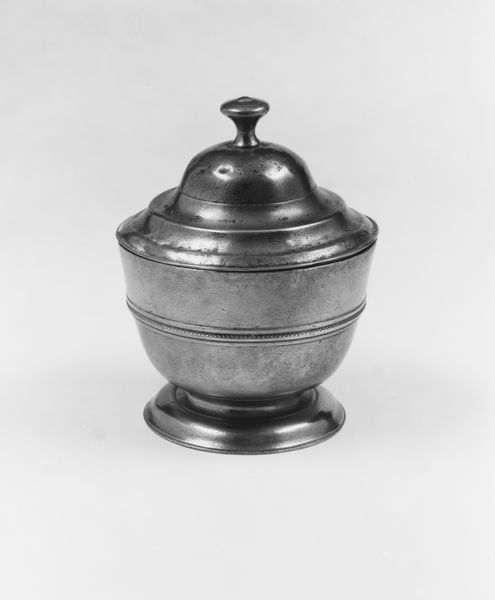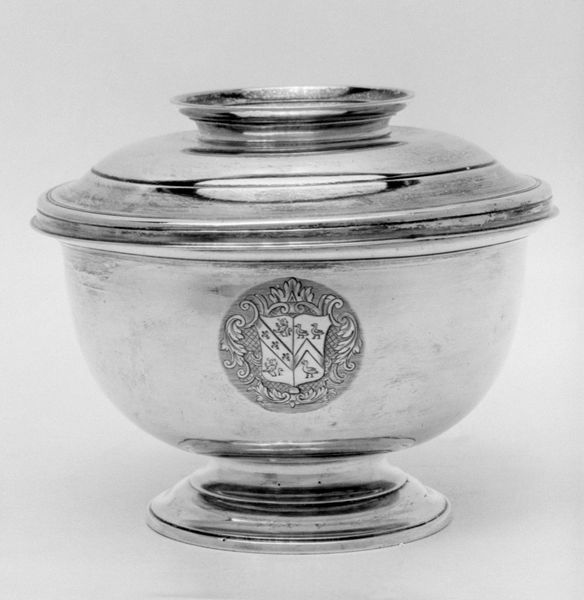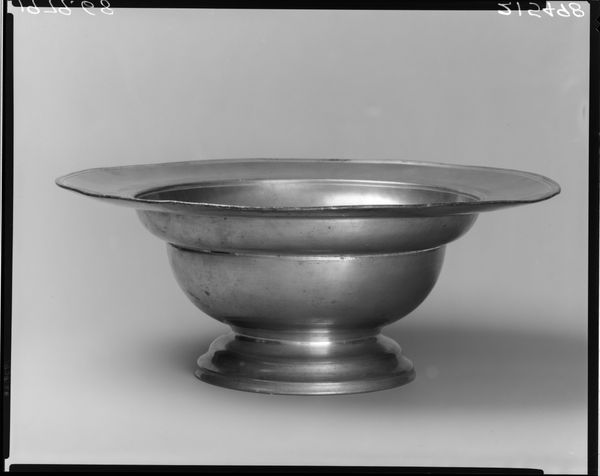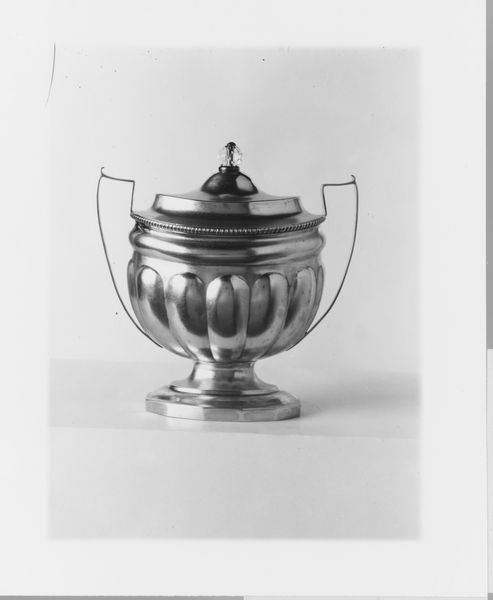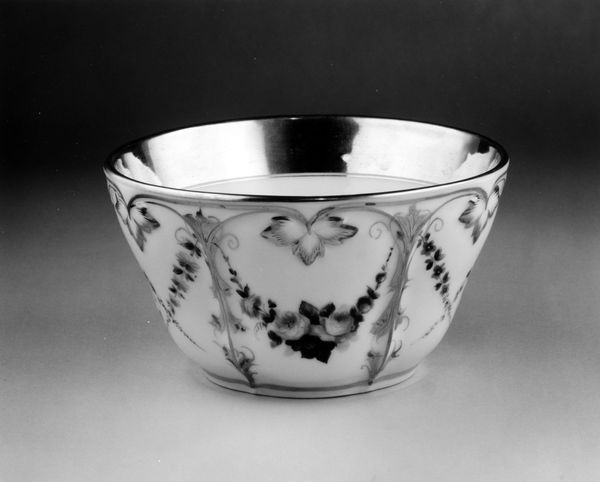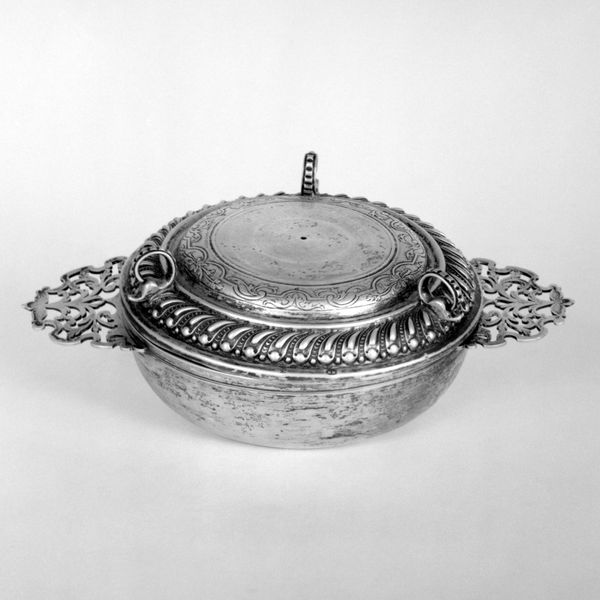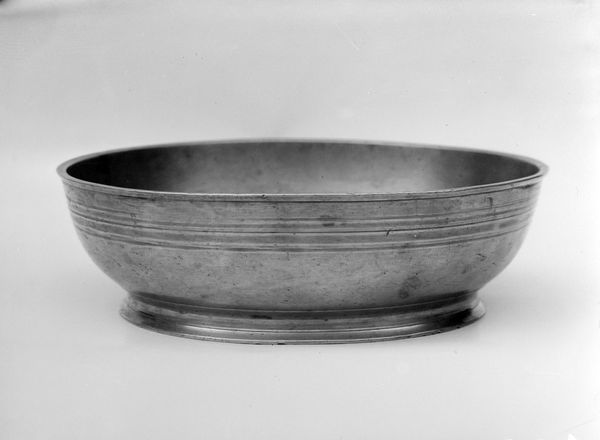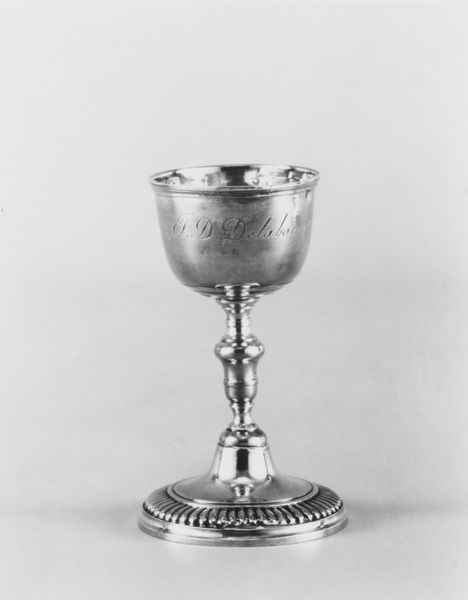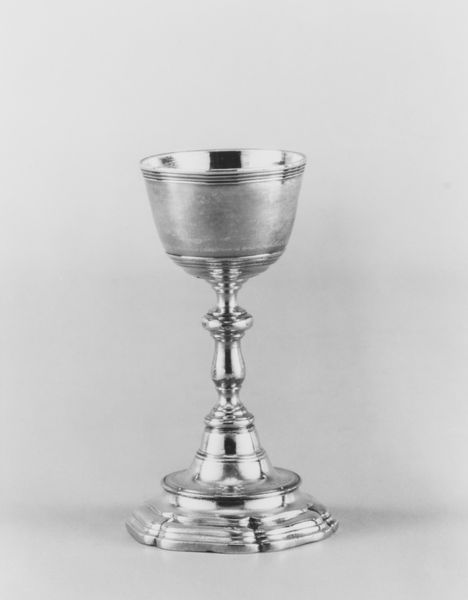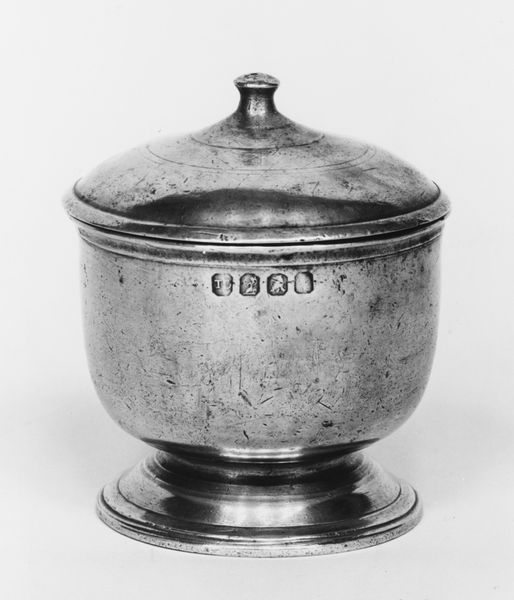
silver, sculpture
#
silver
#
sculpture
#
decorative-art
Dimensions: Overall: 5 1/16 in. (12.9 cm); 11 oz. 18 dwt. (370.5 g) Lip: Diam. 5 3/16 in. (13.2 cm) Foot: Diam. 3 3/16 in. (8.1 cm) Body: H. 4 in. (10.2 cm); 7 oz. 18 dwt. (245.1 g) Cover: 1 3/16 x 4 3/4 in. (3 x 12.1 cm); 4 oz. (125.4 g)
Copyright: Public Domain
This is a sugar bowl made of silver by Cooper and Fisher in the United States, sometime between 1854 and 1862. Its classical form evokes images of ancient Greek and Roman vessels, symbols of hospitality and refined living. Note the initials "A.U.V.B." engraved on the lid. These monograms are fascinating palimpsests. Think of the Renaissance portraits where family crests interwoven with personal emblems signified lineage, status, and aspirations. This act of marking, of personalizing an object, echoes across time. In ancient Egypt, hieroglyphs on sarcophagi were not merely decorative but were vital spells ensuring safe passage to the afterlife. Such markings become more than mere identification. They are vessels of memory, invested with the hopes, dreams, and anxieties of those who possessed them. The sugar bowl and its markings are a stage upon which the drama of human existence plays out, a testament to the enduring power of symbols to connect us to the past.
Comments
No comments
Be the first to comment and join the conversation on the ultimate creative platform.
